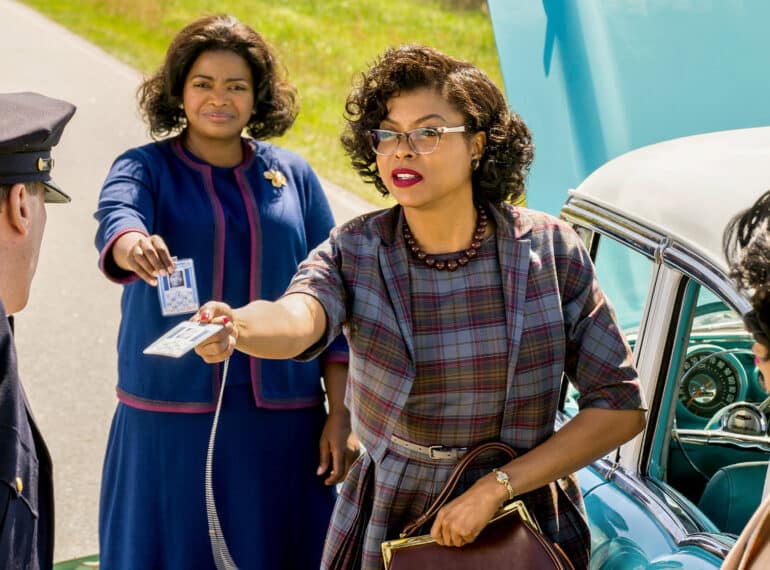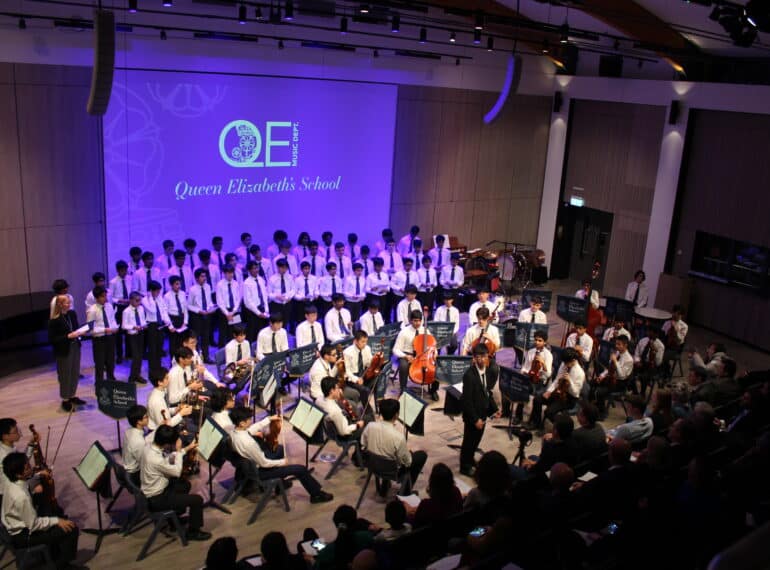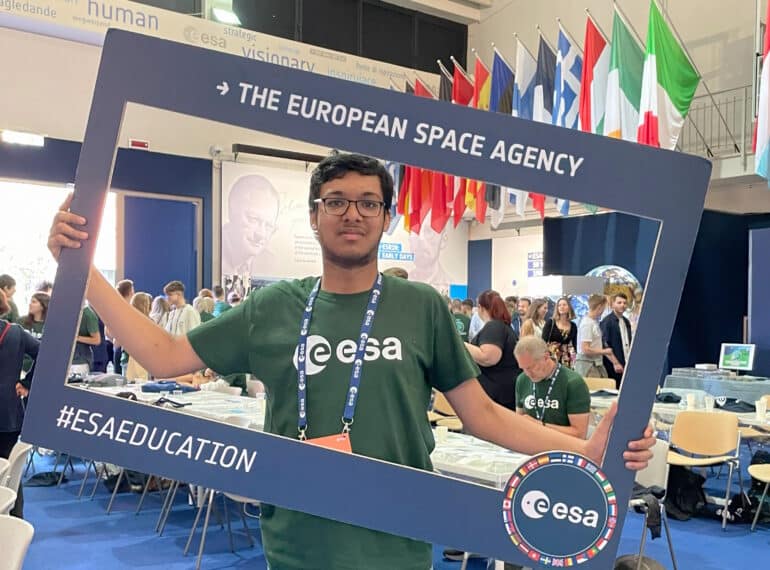David Taylor (OE 1961–1966) here gives his candid account of his key role as the organiser of the 1966 fete. Although there had been occasional fetes at QE before, as it turned out, the 1966 event was to be the start of a tradition of annual fetes that continues to this day.
It was in April 1966 that I first became aware of what being “volunteered“ meant. Tim Thorpe and I were summoned to the study of Headmaster TB Edwards (TBE) in our roles as School Captain and School Lieutenant respectively. We were informed that it had been decided that a School Fete would be arranged to raise funds for the covering of the School’s open-air swimming pool. We were asked to be the organisers. It would be, he suggested, a good opportunity for us to develop our skills and enhance our record of achievement if we were to accept the role of Fete Organisers. It was clearly an honour, and therefore not to be turned down lightly, so we accepted, despite the fact we were also due to take our A-levels in June.
What we had not appreciated was that this was something of a poisoned chalice. Five years after the retirement of the legendary headmaster, Ernest Jenkins, TBE still had not totally won over the hearts and minds of the teaching staff. They had made clear to him that fete organisation was far down their list of priorities, and it is fair to say that, with a couple of exceptions, they maintained this position.
Additionally, the swimming pool project was not popular. None could dispute the fact that improving the facilities would be of benefit. Countless classes of goosepimpled schoolboys had endured the rigours of an English summer as they shivered on the verruca-infected concrete edge fringing the water, trying to delay the moment of immersion in the icy depths. The fact that so many of us passed our Bronze Life Saving Award was a tribute to some form of inner strength not usually apparent. The problem was that the fund-raising had been started some years earlier. The initial enthusiasm had waned as the growth of the fund failed to keep up with the rise in building costs.
Blithely unaware of all the background issues, we launched the project at the start of the Summer Term. We had the target date of Saturday 23rd July. By now the principles of being “volunteered” were understood and we managed to assemble a working committee with representatives from each class. It was agreed that each class would take on responsibility for an activity or stall.
There was a lot of haggling about who should do what. Face-in-the-Wall, Pick-a-Straw, a coconut shy, Crazy Kitchen, Bingo, bran tub, darts, hoop-la, roll-a-penny, raffles, catering, helium balloon race, the list seemed endless. What was actually in short supply were the willing hands to run the activities. Tim Thorpe, my colleague, was a serious cricketer and Captain of the First XI, so increasingly I found more and more of my time taken up by the fete.
Gradually, however, things did start to fall into place, with the production of the fete programme emerging as one of keystones of the project. It didn’t just publicise the activities of the day, but was crucial for fund-raising by selling advertising space to local tradespeople. In those days, Barnet High Street was blessed by some fine shops and businesses. In many cases the sons of the tradespeople had attended the School and were also suppliers of goods and services. Instead of delegating this aspect of the work, I decided that this was something I wanted to do, even producing the programme’s initial design. Fortunately Huw Purchas, the Art teacher, was one of the few staff members to agree to help in the completion of the final version.
I was then able to take the draft of the programme and start selling advertising space in the High Street. I remember the largely generous reception I received – and actually the advertising side was quite successful. In particular, I struck gold with J Robinson of the High Street Delicatessen who agreed to provide the barbecue, complete with hamburgers and two roasting pigs! After all these years, the names of the advertisers in the surviving programme [see below] bring back good memories.
What had initially seemed like a lonely endeavour became less so as more and more people stepped forward to offer help. Peter Felstead was in our year group and was the manager of a pop group, The Metronomes, and he agreed to arrange the dance in the evening. Peter went on to a successful career in the world of music. A fellow sixth-former, John Little, had a famous father, Trevor Little. He was known as The Balloon Man and he kindly offered his entertainment services.
Eventually key activities such as catering, setting up and taking down stalls, running sports and contests were covered by volunteers. The pace increased and A-levels seemed to pass in a whirl as the day of the fete approached. It was certainly a learning experience as I came to grips with booking a candy floss machine, hiring a coconut shy, and borrowing bunting from the local Scout Group. It was even decided that we should offer goldfish in bags as prizes, and so two boxes of fish and dispensing bags were duly ordered. It is wonderful what can be achieved with so little knowledge and understanding of possible consequences.
TBE was kept informed of developments at weekly progress review meetings and finally the last week arrived. A slight hiccup had been identifed, as the provider of the candy floss machine based in Berkhamsted had indicated that we would have to collect it ourselves. Without batting an eyelid, TBE turned to me, confirmed I could drive, handed over the keys to his Bedford van, and gave me permission to go that afternoon and collect it. Accompanied by my friend, George Wormald, we set off. All went well until on the trip home I managed to dent a bumper on the van. As I returned the keys and confessed, TBE just smiled and said: “Ah well.” Not sure this would happen these days.
As the final week progressed the reality started to hit home. Where to store the coconut shy? Did we have enough coconuts? The Crazy Kitchen had seemed a good idea, but did we have sufficient supplies of chipped crockery to smash during the course of the afternoon? On the Friday, I was called to the School secretary’s office to receive a delivery of two large boxes containing goldfish, also tanks of helium and a supply of balloons and labels. What had seemed incidental details some weeks ago now emerged as major challenges.
There were several aspects to the goldfish problem. Each box contained a large clear plastic bag filled with approximately one hundred small fish. The bags were sealed and topped up with sufficient oxygen to last for two days. These bags had to be opened and the fish put into individual prize bags. Two heroes volunteered (were volunteered?) to be in charge of the fish situation. They decided that the large communal bath in the changing rooms would be the ideal venue for this operation. This appeared to solve the problem, and I was free to move on to other things.
We had been advised by the supplier of the candy floss machine that it was not quite as simple to operate as might first appear. Those who had chosen this as their activity had been given the opportunity on the Friday to practise their skills. They had anticipated unrestricted access to a tasty fair ground treat. In no time at all they were faced with the reality of how to restrict the sticky treat to the stick and not enmesh their hands in the cobweb of pink sugar strands. The sight of an arm encased in candy floss remains vividly with me to this day. At least the practice session did give them the chance to prepare for the challenges of full production.
The day of the fete finally arrived, and, to be honest, I can remember little, as events took on their own momentum. The weather was not too bad, a typical grudging English summer’s day. The host of volunteers and a lot of goodwill made the thing happen. I managed to fail to schedule in our star entertainer, the Balloon Man, Trevor Little. Being the professional he was, once he appreciated my omission, he took charge of the entertainment section and soon had a delighted audience.
Somehow the balloons were launched for the distance race, with some form of prize having been offered for the balloon travelling the greatest distance. The operation of the helium tanks was quite a tricky task. These days some form of risk assessment would have been carried out, but those were far-off, and more innocent, times. Learning on the job proved a great way of developing skills. I have no idea of how far the winning balloon travelled, but it did prove to be a good fund-raiser.
Thank goodness there was someone used to handling cash and providing change in what quickly became a swift moving commercial whirlwind Stall takings were logged and some form of financial control maintained. I may have developed many skills during the course of the fete experience, but this is one aspect of life I have never truly mastered. I have no record of the total sum that we actually ended up raising. [£600, according to the local newspaper report below – Ed].
At the end of the proceedings, a loyal group of helpers stayed behind to clear up the remains of the day. Just as I felt that things were coming to an honourable end, I was approached by a member of the goldfish team. My lack of experience in the goldfish department had led me to overestimate wildly possible demand. When I arrived at the changing bath, I was faced by an unopened box of goldfish. The oxygen supply was insufficient to last the weekend. We decided to fill the bath and pour in the remaining fish, leaving them to swim happily over the weekend.
This didn’t, though, solve the problem of what to do with the excess fish – the option of flushing them down the drains having been rejected after some discussion. On the Monday, form representatives were summoned and given a supply of bagged goldfish to distribute to class mates as a small ‘thank you’ from the Fete Committee. Whoever came up with that solution (not me) I am sure went on to better and greater things.
As for myself, in September 1966 I went with Voluntary Service Overseas teaching for a school year in Grenada in the West Indies. One lingering link with the fete were the regular notes from the Boy Scout Troop Leader asking for the return of the troop bunting. These notes were forwarded to me by my father, but I was unable to help. If anyone does find the bunting I would be grateful if it could be returned to the Scouts.
- Click on the thumbnails below to view the images.



 In between these highlights, regular pastoral sessions and a special afternoon were devoted to a project looking at race, intersectionality and women in science ahead of seeing the film, Hidden Figures.
In between these highlights, regular pastoral sessions and a special afternoon were devoted to a project looking at race, intersectionality and women in science ahead of seeing the film, Hidden Figures. The boys’ project involved completing a PowerPoint presentation designed to teach them about topics such as the origins, causes and effects of the Cold War and about the Civil Rights Movement in the US.
The boys’ project involved completing a PowerPoint presentation designed to teach them about topics such as the origins, causes and effects of the Cold War and about the Civil Rights Movement in the US.
 Harrison Lee’s piece, Ego Flos Campi, will be sung by the acclaimed ORA Singers amid the medieval magnificence of Worcester Cathedral as part of the famous Three Choirs Festival.
Harrison Lee’s piece, Ego Flos Campi, will be sung by the acclaimed ORA Singers amid the medieval magnificence of Worcester Cathedral as part of the famous Three Choirs Festival.
 Paarth, of Year 10, triumphed in the ESA’s Climate Detectives challenge after impressing judges with his AI-driven study into tackling electronic waste in Barnet.
Paarth, of Year 10, triumphed in the ESA’s Climate Detectives challenge after impressing judges with his AI-driven study into tackling electronic waste in Barnet. Paarth sent out a survey to residents: the results, he said, were “shocking”, with only a small percentage aware of the hazards of e-waste. Problems he identified included limited access to relevant information on a community website. “Moreover, the waste facilities lack specialised equipment and trained personnel to safely process and recycle e-waste.
Paarth sent out a survey to residents: the results, he said, were “shocking”, with only a small percentage aware of the hazards of e-waste. Problems he identified included limited access to relevant information on a community website. “Moreover, the waste facilities lack specialised equipment and trained personnel to safely process and recycle e-waste. Use of AI: the technical details
Use of AI: the technical details